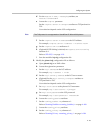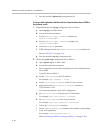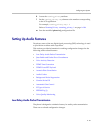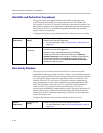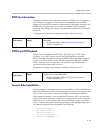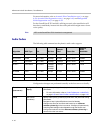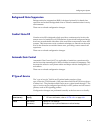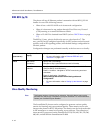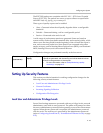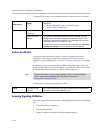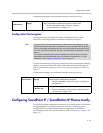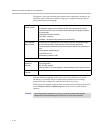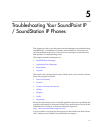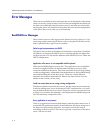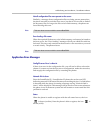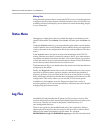
Configuring Your System
4 - 53
The RTCP XR packets are complaint with RFC 3611 - RTP Control Extended
Reports (RTCP XR). The packets are sent to a report collector as specified in
draft RFC draft-ietf_sipping_rtcp-summary-02.
Three types of quality reports can be enabled:
• Alert—Generated when the call quality degrades below a configurable
threshold.
• Periodic—Generated during a call at a configurable period.
• Session—Generated at the end of a call.
A wide range of performance metrics are generated. Some are based on
current values, such as jitter buffer nominal delay and round trip delay, while
others cover the time period from the beginning of the call until the report is
sent, such as network packet loss. Some metrics are computed using other
metrics as input, such as listening Mean Opinion Score (MOS), conversational
MOS, listening R-factor, and conversational R-factor.
Configuration changes can performed centrally at the boot server:
Setting Up Security Features
This section provides information for making configuration changes for the
following security-related features:
• Local User and Administrator Privilege Levels
• Custom Certificates
• Incoming Signaling Validation
• Configuration File Encryption
Local User and Administrator Privilege Levels
Several local settings menus are protected with two privilege levels, user and
administrator, each with its own password. The phone will prompt for either
the user or administrator password before granting access to the various menu
options. When the user password is requested, the administrator password
will also work. The web server is protected by the administrator password
(refer to Configuring SoundPoint IP / SoundStation IP Phones Locally on page
4-55).
Central
(boot server)
Configuration file:
sip.cfg
Specify the location of the central report collector, how often the
reports are generated, and the warning and critical threshold values
that will cause generation of alert reports.
• For more information, refer to Quality Monitoring <quality
monitoring/> on page A-47.



